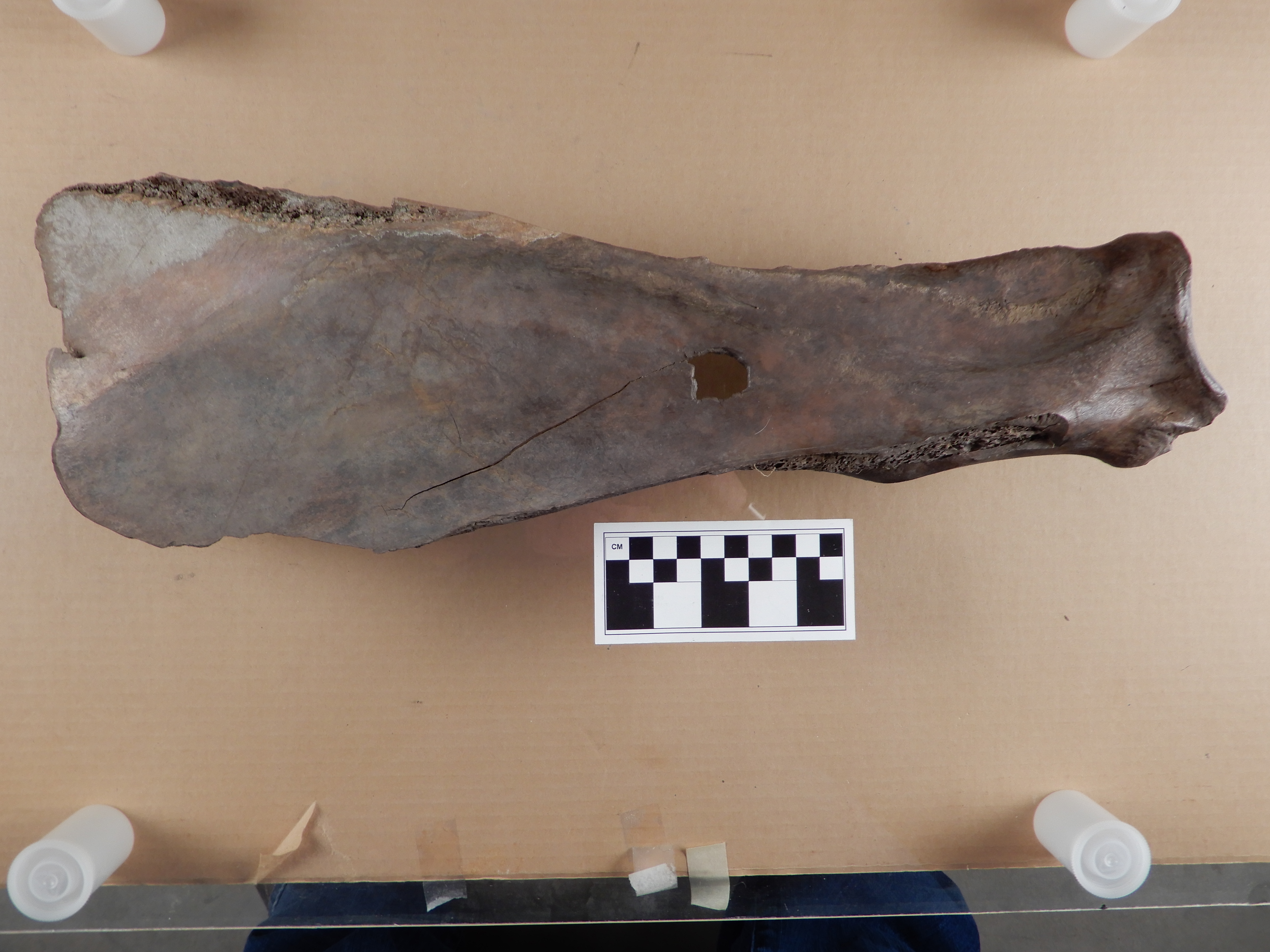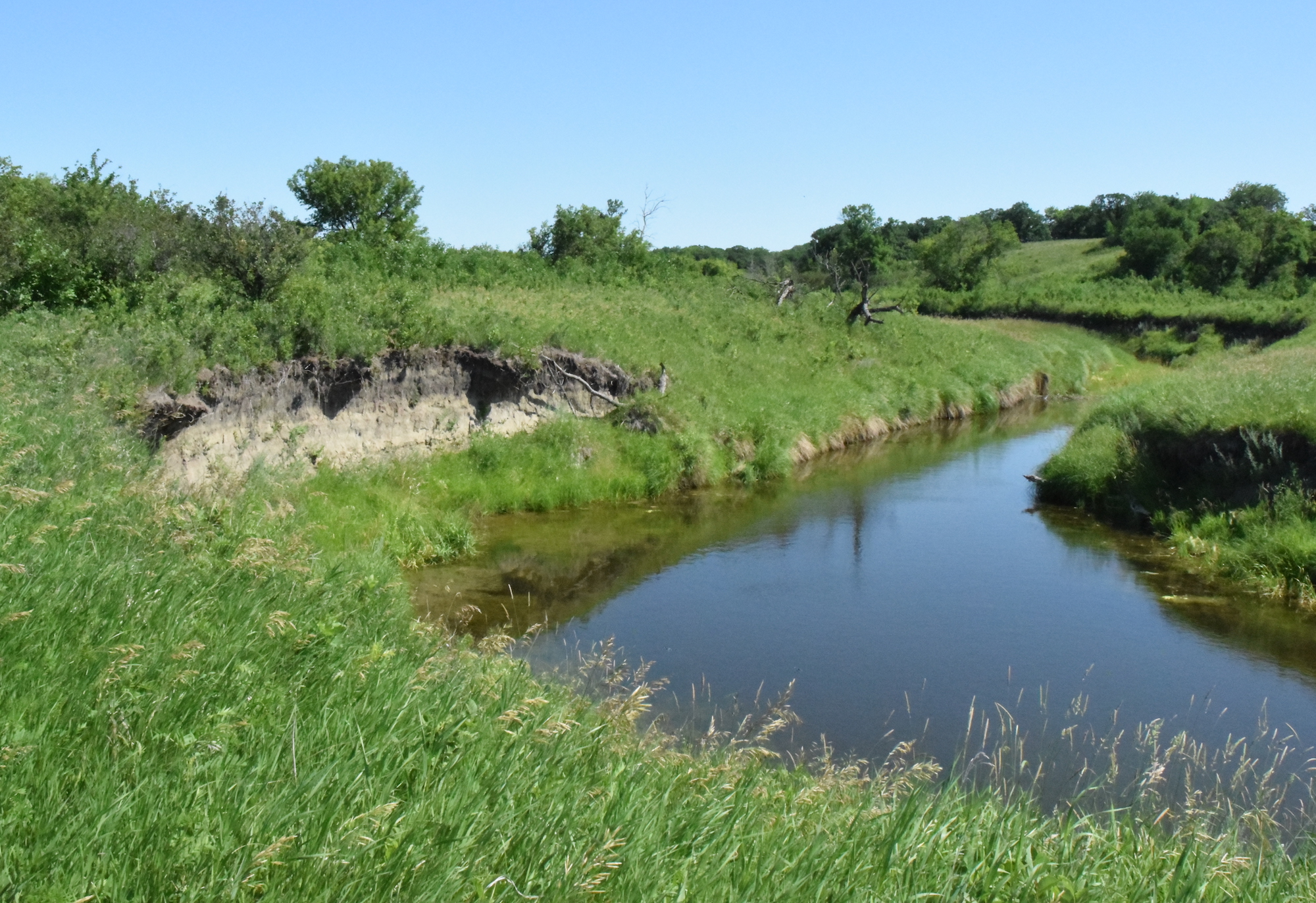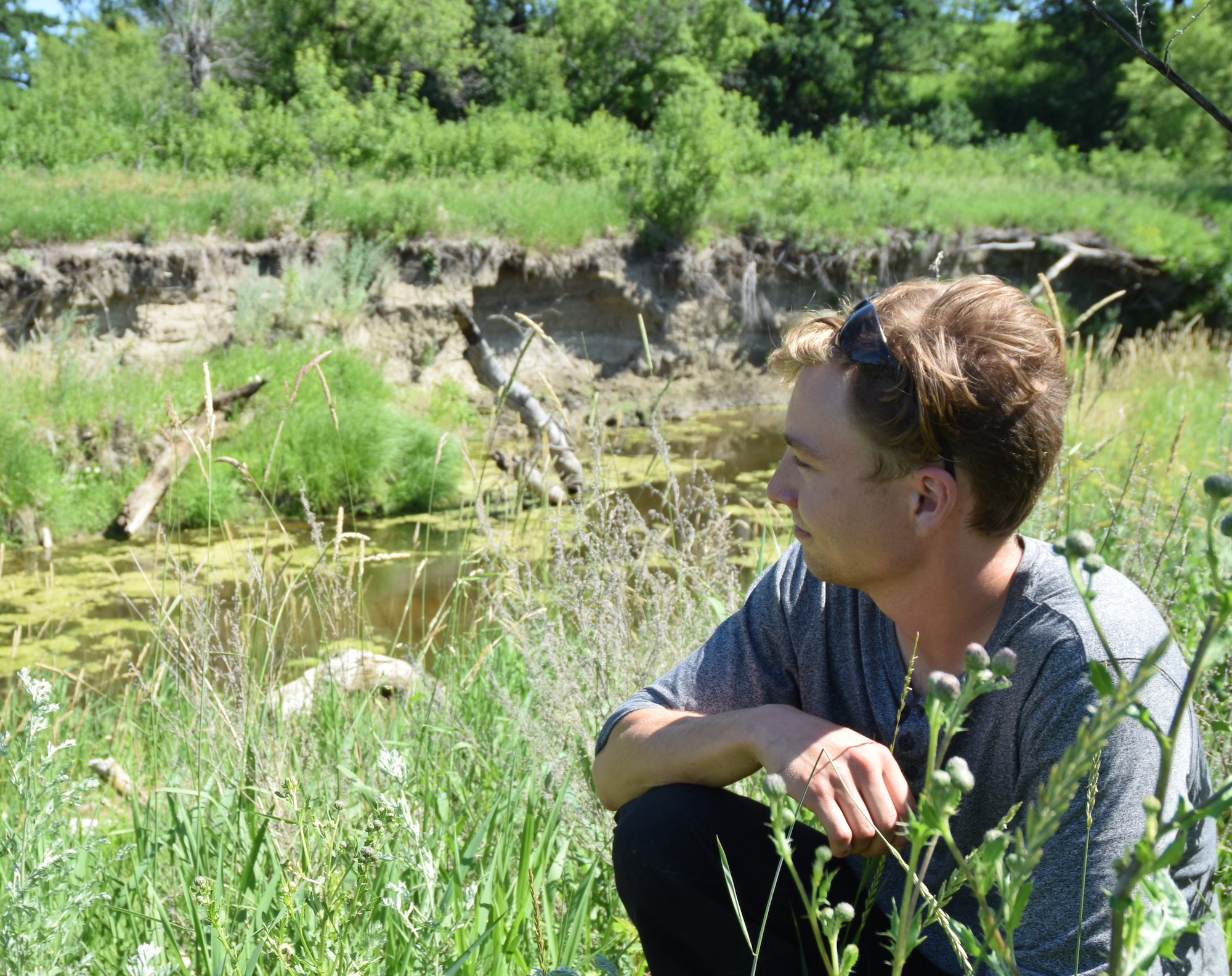Eric Olson and a friend were hiking along Gainsborough Creek in Southwest Manitoba when they found what archaeologists had been seeking for decades: Firm evidence of First Nation farming.
“It was the smoking gun we were looking for,” says Mary Malainey, archaeologist and professor at Brandon University in nearby Brandon, Manitoba.
What Olson and friend found was a hoe blade made from a bison scapula bone. Then they found another and a fragment of a third. “These bison scapula hoes are the biggest archaeology discovery in Manitoba in over 30 years,” Malainey says.

First Nation farmers cut a hole through this bison scapula for sinew bindings to secure the bone blade to a wooden shaft. Photo: Mary Malainey
A bison scapula has a wide blade at one end and a thick knob at the other. The overall shape is somewhat like a snorkeling flipper. In the centre, First Nation farmers cut a hole for the sinew bindings to secure the bone blade to a wooden shaft. For Olson, an amateur archaeologist studying at the University of Manitoba, this human-made hole clearly identified the scapula as a tool.
Olson contacted Malainey, who recognized right away the significance of this discovery. It was strong evidence of pre-European farming on the Canadian grassland plains. Interestingly, Malainey says the previous big discovery, the one from over 30 years ago, was also evidence of First Nation farming on the eastern edge of the plains at Lockport, 350 km northeast of Gainsborough Creek.

Gainsborough Creek is a tributary of the Souris River in Southwest Manitoba. Photo: Jay Whetter
With funding from Brandon University, the Manitoba Archaeological Society and the Manitoba Heritage Grants program, Malainey put together a crew to do a testing excavation of the Olson site in July and August 2019. At least half a dozen archaeologists volunteered their time to help, which is a “testament to the importance of this discovery,” Malainey says.
Malainey and the volunteers dug a series of one metre by one metre test units looking for intact cultural deposits – the stone tools, animal bones and pottery left behind by the people who had lived there. Olson’s hoe was found on the creek bed, which means it eroded from the bank and was no longer in its original location. As a result, the archaeologists could never confirm its place in time and space.
Over the summer of 2019, Malainey and crew found artifacts in the dark band of paleosol, a layer in the soil horizon containing deposits from human occupation. These artifacts included a modified scapula and bone flakes, which she says could be signs of a bone tool workshop. In short, she says, “we found what we were looking for”.
One archaeologist on site was Sara Halwas, a sessional instructor in anthropology at the University of Manitoba and co-editor of the Manitoba Archaeological Journal. Halwas has worked at the Lockport site that, in addition to bison scapula hoes, yielded bell-shaped crop storage pits and the charred remains of corn. This indicates that the crop was actually grown at that location.
Halwas says the Lockport farm site was active from the 1200s to the 1400s during a medieval warming period that made it possible to grow corn that far north. “One hypothesis is that farmers moved up the Red River Valley, then left during the Little Ice Age, which started around 1450,” Halwas says. But where did they go?
They might have moved southwest. In the 1970s, Leigh Syms, curator emeritus of the Manitoba Museum, started looking for evidence of First Nation cultivation in southwest Manitoba but never found the “smoking gun”. Bev Nicholson, a former Brandon University archaeologist, found evidence of corn consumption in the Eastern Prairies but did not find clear evidence of local farming. Eric Olson’s discoveries changed that. What makes the Olson site especially exciting for archaeologists is its relatively pristine condition. It is within a wildlife preserve and appears to be untouched since the time of European arrival.

Eric Olson and a friend discovered firm evidence of First Nations farming while hiking at Gainsborough Creek in Southwest Manitoba. Photo: Jay Whetter
“This is very rare,” Halwas says. The Lockport site was heavily disturbed by establishment of the town and construction of the Winnipeg floodway. Other known Great Plains farming sites on the Missouri River were flooded by dam building from the 1930s to 1950s and were never properly examined.
“The Olson site gives us the chance to answer questions we’ve not been able to answer before,” Malainey says.
Malainey has been busy this winter applying for grants hoping to obtain enough funding for a five-year project at the Olson site. This summer, she hopes to use ground-penetrating radar to search for crop storage pits near the site. Halwas will be part of the team and has a few modern archaeology techniques she looks forward to trying. These include micro-botanical tests to check for pollen grains, phytoliths (silica bodies that form within and between plant cells) and starch grains, all of which she can use to identify the plants farmed in the area. Chemical tests of soil core samples can also show “peaks and deletions in soil phosphorus,” Halwas says, which could be evidence of a nutrient-hungry crop like corn.
Malainey says the Olson site was probably farmed for 150 to 200 years, during a time period after Lockport and up to the beginning of the fur trade. Further examination will be able to add clarity to that claim. Another question begging an answer is who were these farmers? “At this time, we don’t know,” she says. “European contact led to huge disruptions to Indigenous populations, which makes it very hard to attach ethnicity.”
Reprinted with permission from Prairie History magazine.
By: Jay Whetter

Jay Whetter is an award-winning agriculture journalist. He lives in Kenora, Ontario.
